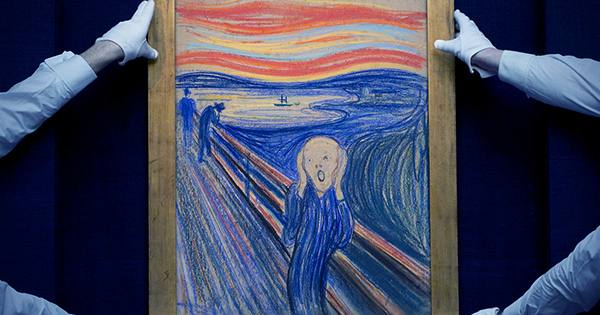New scans edited by Norway’s National Museum have confirmed that the artist himself kept a secret message from The Scream on the Edward stage there. Created in 1893 with the original title Der Schrei der Natur (Shout of Nature), the painting of a man in visible pain has become one of the world’s most famous works. The bright red lights in the sky probably inspired by the paintings created by the Krakatoa explosion and he began to walk the stage.
“I was walking along a path with two friends – the sun was going down – suddenly the sky turned red with blood – I stopped, felt tired, and leaned towards the shackles – there was blood on the blue-black fjord and the tongue of fire was the city, “he said of the painting.” My friends moved on, and I stood there trembling with anxiety – and I felt endless screams through nature.” In the upper left corner of the painting, there is a small message, written in pencil after the work is finished, “Can only draw by crazy”.
Prior to an exhibition at the museum in 2022, the painting was analyzed using infrared technology to determine who placed the inscription. For decades, it has suggested that it could compose as a work of vandalism by an individual or by the stage itself. By comparing the handwriting with his note, they were able to confirm that it written by the artist. “Undoubtedly this writing is Munch’s own,” said My Brit Guleng, curator of the National Museum, in a statement. “The handwriting itself, as well as the events that took place in 1895, when the stage first showed the painting in Norway, is all in the same direction.”
The museum believes the inscription probably made after the painting exhibited in Christiania (later turned into Oslo). At a time when people were speculating about the mental health of the stage, Johan Scharffenberg, a medical student, claimed that the stage paintings proved that he was not depressed, which may have been a reaction to the inscription.
“I have inherited two terrible enemies of mankind, the legacy of consumption and madness. Illness and insanity and death were black angels standing in my childhood,” Mancha once wrote of his own mental health and the mental illness in his family including his very favorite sister. He added, “My illness is just as important to me as the fear of life.” “Without worries and illness, I am a ship without a building …. My troubles are a part of my own and my art. They are inseparable from me and their destruction will destroy my art.”
















